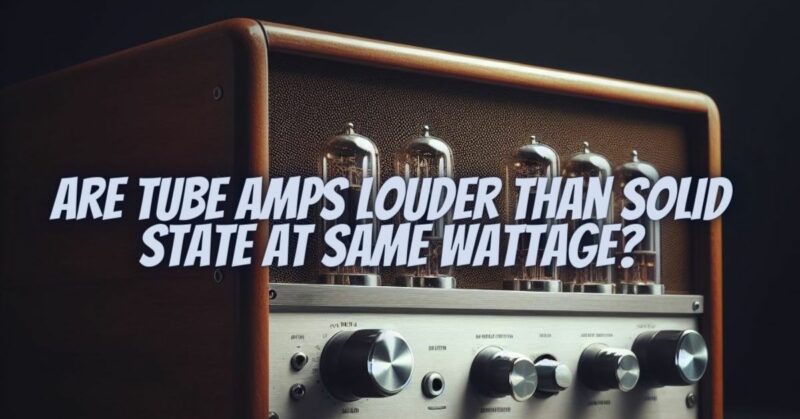In the world of audio amplification, one often-encountered and intriguing question is whether tube amplifiers are louder than solid-state amplifiers when both are rated at the same wattage. This question touches on the unique characteristics of these two amplifier types and how they handle power delivery and sonic characteristics. In this comprehensive article, we will delve into the factors that contribute to the volume discrepancy between tube amps and solid-state amps with the same wattage rating, ultimately seeking to understand why tube amplifiers are often perceived as louder.
Understanding Tube and Solid-State Amplifiers
Before exploring the volume differences between tube and solid-state amplifiers, it’s crucial to have a basic understanding of how each type operates:
- Tube Amplifiers: Tube amplifiers, also known as valve amplifiers, use vacuum tubes (electron tubes or valves) to amplify audio signals. These tubes have a cathode, an anode (or plate), and at least one control grid. When a small input voltage is applied to the control grid, it modulates the flow of electrons from the cathode to the anode, resulting in signal amplification.
- Solid-State Amplifiers: Solid-state amplifiers use transistors (typically bipolar junction transistors or field-effect transistors) to amplify audio signals. Transistors are semiconductor devices that control the flow of electrical current and voltage in a circuit to amplify the input signal.
Factors Contributing to the Volume Discrepancy
Several factors contribute to the perception that tube amplifiers are louder than solid-state amplifiers at the same wattage:
- Harmonic Distortion: Tube amplifiers introduce harmonic distortion, primarily in the form of even-order harmonics, when amplifying audio signals. These harmonics add richness and complexity to the sound, making it subjectively louder to the human ear, even when the actual power output is not significantly higher.
- Soft Clipping: Tube amplifiers tend to exhibit soft clipping characteristics when they approach their power limits. Soft clipping is a gradual distortion that occurs as the amplifier begins to saturate. This effect is often considered more pleasing to the ear than the harsh clipping found in solid-state amplifiers. As a result, the sound from a tube amplifier may seem louder and more natural when pushed to its limits.
- Dynamic Compression: Tube amplifiers exhibit dynamic compression at high volumes. This means that as you increase the input signal level, the amplifier’s output begins to compress, limiting the dynamic range. This compression can make the music sound punchier and more energetic, contributing to the perception of loudness.
- Slew Rate: Tube amplifiers typically have a slower slew rate, which is the rate at which the amplifier can change its output voltage. This slower slew rate can make the amplifier sound more “musical” and may contribute to the perception of increased loudness.
- Speaker Matching: Tube amplifiers are often paired with high-efficiency speakers that can efficiently convert the amplifier’s power into sound. This optimized speaker matching can result in a more efficient acoustic output, further enhancing perceived loudness.
It’s important to note that these factors do not indicate that tube amplifiers actually produce more power than solid-state amplifiers at the same wattage. Instead, they illustrate how the perceived loudness can differ due to harmonic richness, soft clipping, dynamic compression, slew rate, and speaker matching.
While it may seem counterintuitive that tube amplifiers are perceived as louder than solid-state amplifiers at the same wattage, this perception is primarily a result of the unique sonic characteristics of tube amplifiers. Tube amplifiers introduce harmonic distortion, soft clipping, and dynamic compression, which contribute to the richness and perceived loudness of the sound. Solid-state amplifiers, on the other hand, typically produce cleaner and more linear amplification, leading to a different listening experience.
Ultimately, the choice between tube and solid-state amplifiers depends on personal preferences and the desired sonic characteristics. Both types of amplifiers have their merits and are celebrated by audio enthusiasts for their unique qualities, catering to a diverse range of tastes and musical genres.


